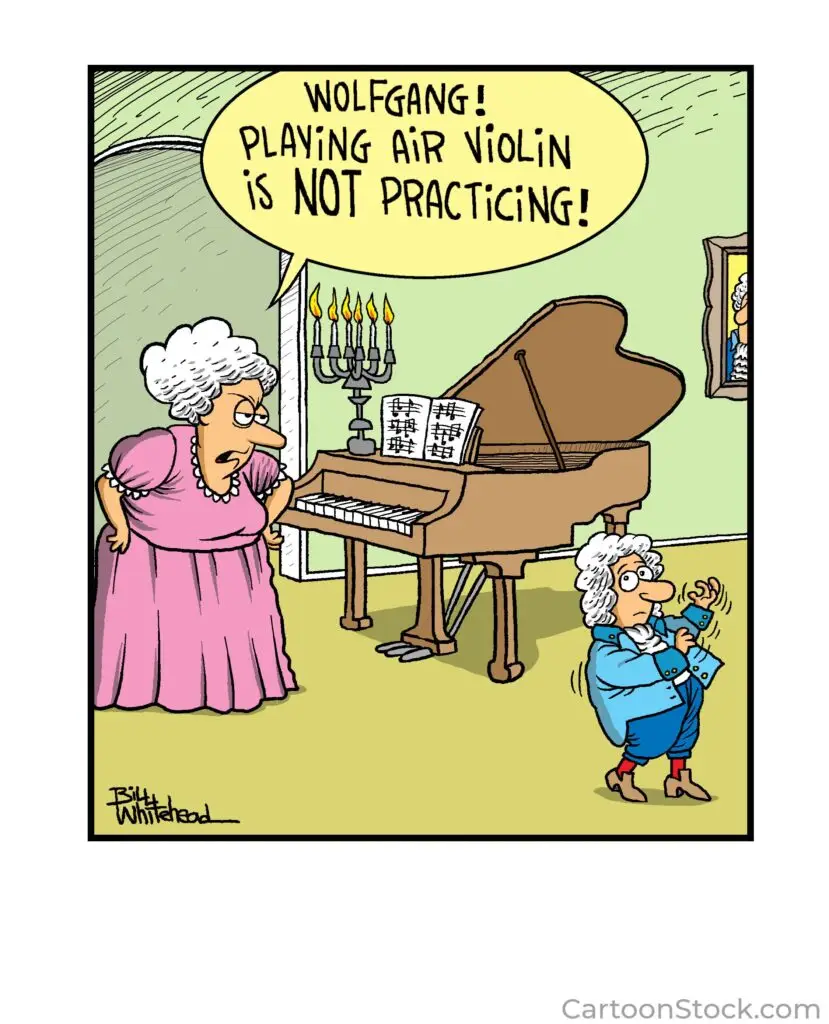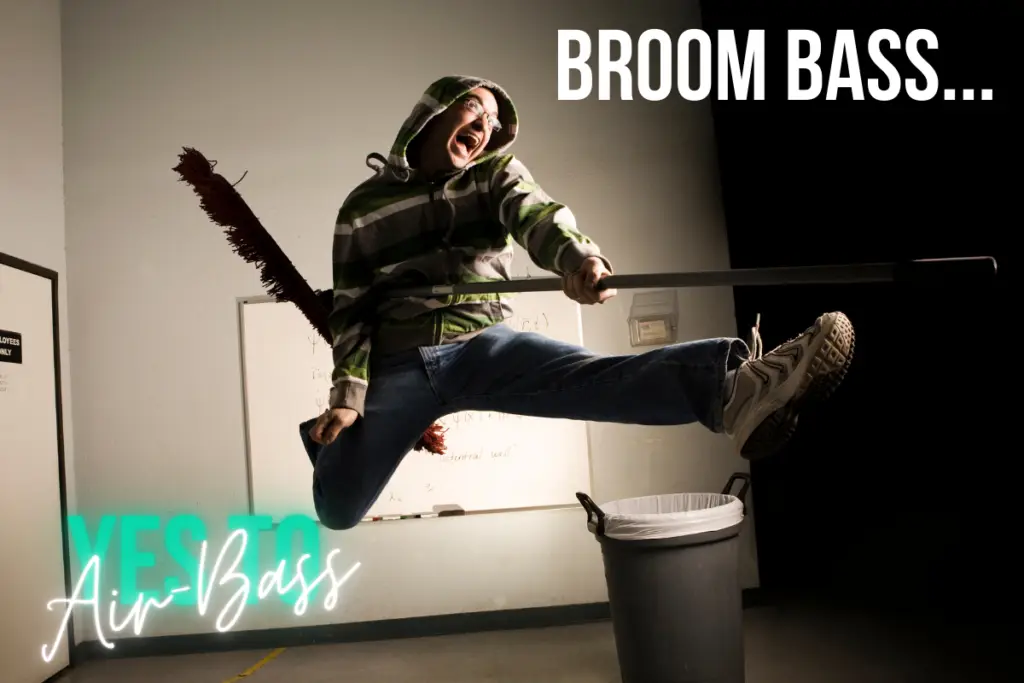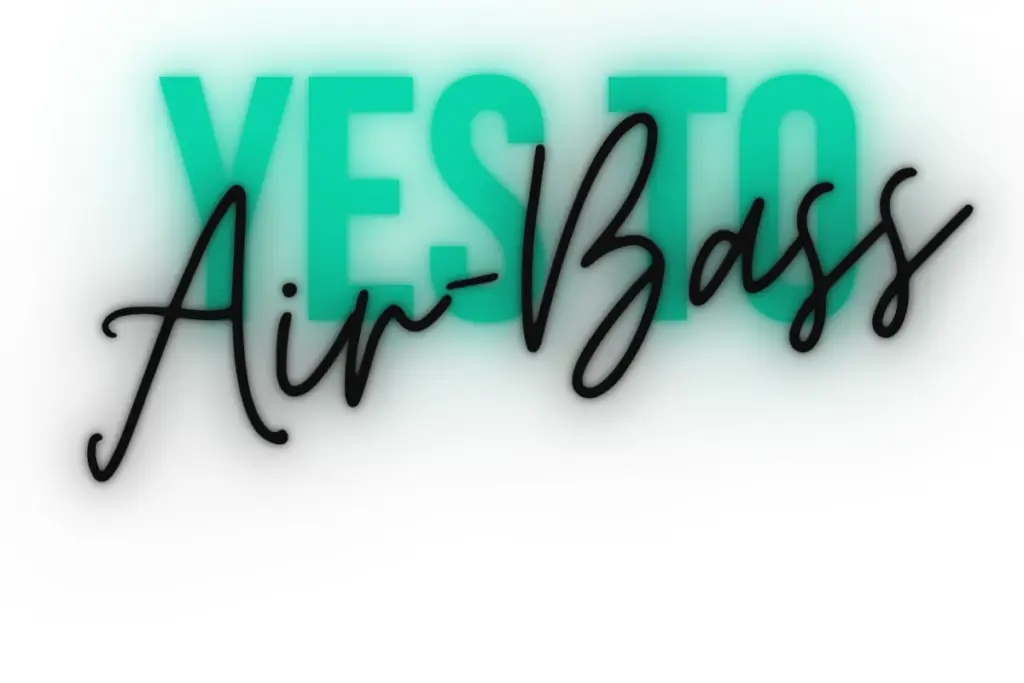Why I wholeheartedly disagree with this cartoon...

Actually, done right, air-bass practice is great practice!
Playing air-guitar or air-bass is a fun way to let off steam, get into the music, and feel immensely playful. In its unstructured form, it won’t make you a better player. However, if we classify air-guitar practice as a type of away-from-the-instrument practice then we enter the realm of “mental practice” and that, in fact, is some of the most potent practice there is!
So, how do I practice effectively in my mind?
Both of my books are chock-full of suggestions for this.
Here are a few examples:
- Say the note names of the A major scale backwards at a quarter note tempo of 80bpm
- Imagine whole steps up the E string – see the notes on the fretboard and name them!
- Say the cycle of fifths to the left all the way around
- Name the key signature of Db
- Build the C# melodic minor scale in your mind
How about visual mental practice?
- Visualize the G major pentatonic scale in all five areas of the bass
- Create the G major pentatonic scale diagonally over the entire fretboard in your mind’s eye
- Play (in your mind) the G major pentatonic scale on the top two strings only up the bass]]]
- Visualize the bass line to your favorite tune – you can visualize your view of the fretboard, or the chart you learned it from
- Do Connection Exercises (a drill from the Pattern System Book) through the cycle to the left in Area 3, saying note names to a click (this is power practice!)
Inner hearing is incredibly powerful, and also a form of mental practice:
- Hear your favorite bass line in your mind
- Say the scale degrees of a bass line
- Say chord scale degrees of a tune
- Hear a solo or bass line you want to play in your mind
Kinesthetic mental practice
Air guitar has everything to do with movement – which falls under the kinesthetic/muscle memory realm:
- “Air-finger” an Ab major scale,
- or a Pattern drill from the Pattern book
- Play the bass line of a song only in your mind, moving your fingers along with it!
All at once
Imagine a simple G major scale from the root to the octave and back.
- See it on the fretboard.
- Then hear it in your mind.
- Then feel your fingers play it.
- Then say the note names.
Did any of them come easier than the others? Was one sense always present? Which one? Does it change by the day or depend on what you are practicing?
In our classes, we explore these sorts of things intensely. To play freely and with confidence means the music comes to you before you actually play it. By practicing like I describe above you become more and more conscious of how this is happening for you.
Air Guitar and Rhythm
- chanting
- scatting
- duh-duhs and din-ga-las
- silly syllables
- and most importantly making the body move!!
Whether you play BassBall,

mop-bass...

rock out on a broom...

or prefer going free-style...

it will help you tremendously to feel the music in your bones, to access your natural expression of the notes, and to engrain the form and feel of a song. It can also help you access how much you love the song/event music itself and your own ability to make music, so by all means, go for it!
I will leave you with a note from one of our members, who posted this on our boards today:
I had an interesting experience after the class yesterday. I had to drive quickly up to Petaluma - about forty minutes north. I didn’t have time to practice Stir it Up before I left. So I decided to listen to Bob Marley’s original version of the song in the car. The bass line was really easy to hear in my car stereo and so I just listened to it over and over again and I played along with the bass using bebop sounds (Is that like air-bass?). I did it probably about 20 times on the round trip . When I came home, I picked up my uBass and it was not only easy to finger, but I immediately felt the rhythm in my body! I would say that was the first time I ever learned to play a song without an instrument in my hand! Thank you, Ari!
Daniel Sonkin Tweet


